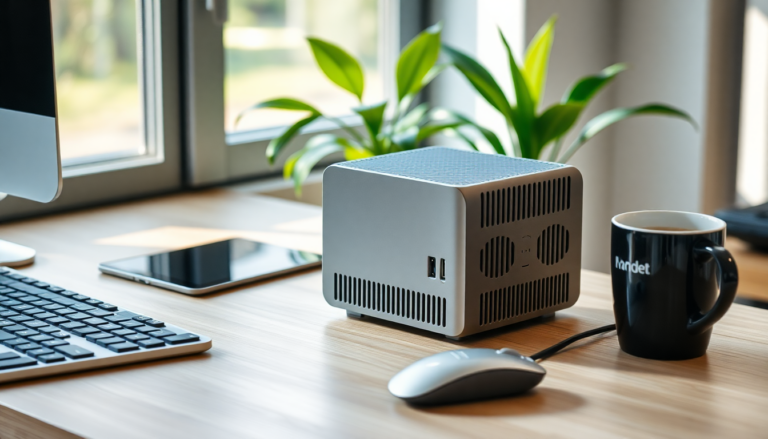Argomenti trattati
In a world where technology is advancing at lightning speed, mini PCs have carved out a niche for themselves as a go-to solution for those looking for affordable, space-saving computing options. These compact devices, often equipped with components akin to those found in laptops, offer a captivating blend of performance and portability. But what should you really know about their features, capabilities, and possible limitations? Let’s dive into the essentials to help you make an informed choice that fits your needs perfectly.
The compact design and specifications of mini PCs
Take the GMKtek G3 Plus, for example—this remarkable mini PC measures just 4.5 x 4.2 inches (114 x 106mm). It’s a dream come true for anyone with limited desk space or for those who thrive on a minimalist computing setup. Inside, it packs a punch with an Intel N150 quad-core processor, 16GB of RAM, and 512GB of storage, providing a solid foundation for daily tasks without draining your wallet.
If you’re looking to boost your mini PC’s performance, many models, like the GMKtek G3 Plus, offer upgrade options. You can expand it to a whopping 32GB of DDR4 RAM and 2TB of Gen 3 M.2 storage. This flexibility allows you to customize your device to meet your specific needs, ensuring it can grow with you without the hassle of a complete overhaul.
Performance insights and connectivity options
Now, let’s talk performance. While mini PCs might not be your best bet for high-end gaming or heavy computational tasks, they shine when it comes to general productivity and multitasking. The Intel N150 processor, while not a powerhouse, is perfectly adequate for most users, allowing for smooth operation of standard Windows applications and efficient browsing across multiple tabs. Have you ever tried juggling tasks on a slower machine? You know how frustrating that can be!
Plus, mini PCs often come equipped with a variety of connectivity options that make them versatile for different setups. The GMKtek G3 Plus supports dual 4K monitors and connects effortlessly to Wi-Fi 6 networks and Bluetooth 5.2 devices. However, it’s worth noting that it lacks USB-C ports, which might limit compatibility with some cutting-edge peripherals. Instead, it offers four USB-A ports, providing plenty of options for connecting your devices.
Value proposition and market considerations
Starting at around $150, mini PCs are an attractive choice for budget-conscious consumers who want reliable performance without breaking the bank. When you compare them to traditional desktop models that often come with a hefty price tag, mini PCs can save you a significant amount while still offering essential functionality. The barebones version of the GMKtek G3 Plus, priced at just $120 without RAM or storage, really highlights how affordable these devices can be.
As the market continues to lean towards more affordable computing solutions, mini PCs are likely to stay popular among consumers. Their compact design, upgradeability, and competitive pricing make them a strong contender in today’s computing landscape. If you’re in the market for a low-power workstation or an upgradeable desktop option, mini PCs definitely deserve your attention. Could this be the solution you’ve been seeking?

